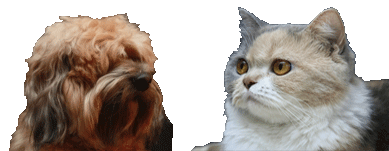Information about the Kerry Blue Terrier
The Kerry Blue Terrier is a breed of dog. Mistakenly thought to be from County Kerry in South West Ireland, it’s actually from Tipperary in South Central Ireland. In Ireland it is often called the Irish Blue Terrier. Originally bred to control “vermin” including rats, rabbits, badgers, foxes, otters and hares, over time the Kerry became a general working dog used for a variety of jobs including herding cattle and sheep, and as a guard dog. Today the Kerry has spread around the world as a companion and working dog. Despite winning Crufts (the most important UK dog show) in 2000, it remains an unfashionable breed, still distinctly uncommon, but not as threatened as some of the other terrier breeds such as Skye Terrier, Sealyham Terrier, and Dandie Dinmont Terrier.
Some characteristics of the Kerry Blue Terrier include a long head, flat skull, deep chest, and a soft wavy-to-curly coat that comes in several shades of blue (the term for “gray” in dog coats). Puppies are born black; the blue appears gradually as the puppy grows older, usually up to 2 years of age. The ideal Kerry should be 18-1/2 inches at the withers for a male, slightly less for the female. The most desirable weight for a fully developed male is from 33-40 pounds, females weighing proportionately less.
The coat is the key feature of the Kerry. It is soft and wavy with no undercoat. The texture is similar to that of fine human hair and like human hair does not shed but continues to grow throughout the year. This means the Kerry Blue requires very regular grooming (at least once per week) and clipping an average of every 6 weeks.
Kerry Blue Terriers are strong-headed and highly spirited. They have always been loyal and affectionate towards their owners and very gentle towards children but were often considered downright mean toward other animals including other dogs. In the early days of competitive dog showing the Irish Kennel Club required Kerries had to pass a “gameness” test, known as Teastas Mor certification, before they were deemed worthy of being judged. These tests included catching rabbits and bringing a badger to bay in its set. They are fast, strong, and intelligent. They do well in obedience, dog agility, sheep herding, and tracking. They have been used as police dogs in Ireland. Modern breeders have attempted to retain high spirits whilst breeding out aggression.
As a long-legged breed, the activity level of the Kerry Blue Terrier ranges from moderate to high. They require an active, skilled owner who can provide them with early socialization and obedience training. Kerries require daily exercise.
Kerries are fairly healthy, however there are some genetic disorders that are prevalent in the breed. They are prone to eye problems such as Keratoconjunctivitis sicca (dry eyes), cataracts, and entropion. They sometimes get cysts or cancerous growths in their skin, but these are rarely malignant. Hip dysplasia, hypothyroidism, cryptorchidism have also been reported. Progressive neuronal abiotrophy (PNA) is also seen. This condition is also referred to as Cerebellar cortical abiotrophy (CCA) or Cerebellar Abiotrophy (CA). Another skin-related health issue is spiculosis. This is a skin disorder that produces abnormally thick hairs that are also called thorns, spikes or bristles.
The Kerry Blue terrier was first observed in the mountains of Kerry in Ireland, hence the name of the breed. There is a romantic story of a blue dog swimming ashore from a shipwreck: the coat of this dog was so lovely that it was mated with all the female Wheaten Terriers in Kerry (or in all Ireland according to some), producing the Kerry Blue. Perhaps this story is not entirely myth as the Portuguese Water Dog is often suggested as part of the Kerry’s make up. Others suggest the Kerry was produced by the Soft Coated Wheaten Terrier crossed with the Bedlington Terrier with (or without) some Irish Wolfhound or Irish Terrier blood. The extinct Gadhar herding dog is also mentioned as another possible branch of the Kerry’s family tree. One certain fact is the breed became very popular as an all-around farm dog in rural Ireland.
National Dog of Ireland
With the development of dog shows in the late 19th and early 20th centuries the breed became standardised and tidied up for the show ring. It was closely associated with Irish nationalism with the nationalist leader Michael Collins owning a famous Kerry Blue named Convict 224. Indeed Collins made an attempt to have the Kerry blue adopted as the national dog of Ireland.
It should be stated, however, that the love of dogs crossed political divides. The first show of the Dublin Irish Blue Terrier club took place outside official curfew hours and was entered by those fighting for and against an Ireland Republic. The Dublin Irish Blue Terrier Club was so successful it led directly to the foundation of the Irish Kennel Club. A Kerry blue was the first dog registered with the Irish Kennel Club.
[Back]

